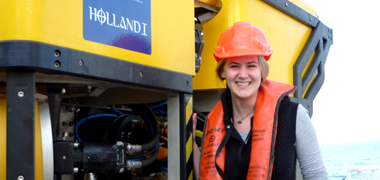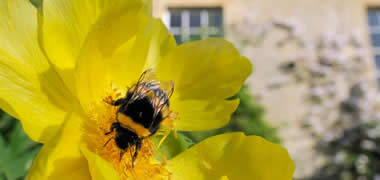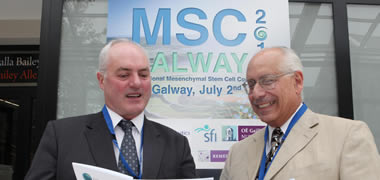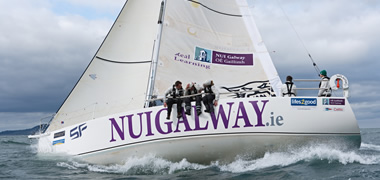-
Courses

Courses
Choosing a course is one of the most important decisions you'll ever make! View our courses and see what our students and lecturers have to say about the courses you are interested in at the links below.
-
University Life

University Life
Each year more than 4,000 choose University of Galway as their University of choice. Find out what life at University of Galway is all about here.
-
About University of Galway

About University of Galway
Since 1845, University of Galway has been sharing the highest quality teaching and research with Ireland and the world. Find out what makes our University so special – from our distinguished history to the latest news and campus developments.
-
Colleges & Schools

Colleges & Schools
University of Galway has earned international recognition as a research-led university with a commitment to top quality teaching across a range of key areas of expertise.
-
Research & Innovation

Research & Innovation
University of Galway’s vibrant research community take on some of the most pressing challenges of our times.
-
Business & Industry

Guiding Breakthrough Research at University of Galway
We explore and facilitate commercial opportunities for the research community at University of Galway, as well as facilitating industry partnership.
-
Alumni & Friends

Alumni & Friends
There are 128,000 University of Galway alumni worldwide. Stay connected to your alumni community! Join our social networks and update your details online.
-
Community Engagement

Community Engagement
At University of Galway, we believe that the best learning takes place when you apply what you learn in a real world context. That's why many of our courses include work placements or community projects.
2012
All 2012
Latest Maps of Coral Reefs to Inform Conservation Policy

Friday, 31 August 2012
The newest and most detailed maps showing the predicted location of coral reefs in Irish waters were revealed at a conference in NUI Galway this week. The maps are expected to prove very useful to policymakers, and draw heavily on information contained in the Irish National Seabed survey seafloor bathymetry map – one of the most extensive maps ever produced by a maritime nation. They were presented by NUI Galway PhD candidate, Anna Rengstorf, at a four-day international marine conference ‘Ecosystem Based Management and Monitoring in the Deep Mediterranean and Norht Atlantic’ which concludes today. Over 70 scientists and stakeholders from 15 countries attended the event at NUI Galway to discuss the latest scientific research from two European Union funded projects - CoralFISH and Deepfishman - devoted to the management of deep-sea resources. The aim of the conference is to produce concrete proposals for the implementation of improved management of deep-sea fisheries and indeed other deep-sea resources taking into account the need to conserve biodiversity. The conference is very timely as the European Commissioner for Maritime Affairs, Mde. Damanaki has proposed changes to the Deep-Sea Access Regime governing the licensing of boats wanting to fish deep-sea species. The Commissioner has proposed that trawling and all bottom contact fishing gears should be phased out over a two year period. This has been met with applause by conservationists but with less enthusiasm by fishermen. Dr Anthony Grehan, of the Ryan Institute at NUI Galway, who is hosting the conference said: “The need to develop the tools and a strategy for the implementation of maritime spatial planning is becoming increasingly urgent. Competition for deep-sea resources is becoming more intense while the need to ensure adequate conservation of biodiversity - and genetic variety - is a priority for the future health of the planet.” One approach that is gaining favour is the development of habitat suitability modeling that takes information about where species or habitats occur from detailed maps and extrapolates it to produce predicted distribution maps over much larger areas. NUI Galway is one of the pioneers of applying this approach in the deep-sea. The maps produced by Ms Rengstorf, who is a Geological Survey of Ireland Griffiths Programme post-graduate awardee, will feed into this approach. Dr Grehan who supervises the project said, “these maps are statistically robust and reduce the need for expensive field mapping while providing sufficient detail for policymakers and managers to enable activity zoning as a key component in the implementation of a any future maritime spatial plan.” Dr Grehan added this is definitely the way forward and will likely become a key component of the implementation of the ‘Harnessing Our Ocean Wealth - An Integrated Marine Plan for Ireland’. The Government plan was launched by An Taoiseach Enda Kenny, TD at the Marine Institute, Galway last month with the intention of doubling the value of Ireland’s ocean wealth to 2.4% of GDP by 2030 and increasing the turnover from our ocean economy to more than €6.4bn by 2020. -ends-
>> Read full story about Latest Maps of Coral Reefs to Inform Conservation Policy
Invertebrates on the brink

Friday, 31 August 2012
New report reveals conservation status of the world’s invertebrates One fifth of the world’s invertebrates may be heading for extinction according to ‘Spineless’, a report published today (Friday 31 August) by the Zoological Society of London (ZSL), in conjunction with IUCN and the IUCN Species Survival Commission. Digging up earthworms, chasing butterflies and collecting clam shells could become a thing of the past if enough isn’t done to protect invertebrates. And if they disappear, humans could soon follow. These critters form the basis of many of the essential benefits that nature provides; earthworms recycle waste nutrients, coral reefs support a myriad of life forms and bees help pollinate crops. More than 12,000 invertebrates from the IUCN Red List of Threatened Species were reviewed by conservation scientists who discovered freshwater species to be under the highest risk of extinction, followed closely by terrestrial and marine invertebrates. Dr Louise Allcock of the Ryan Institute at NUI Galway was one of the co-authors of the report. The findings from this initial group of global, regional and national assessments provide important insight into the overall status of invertebrates. Together they indicate that the threat status of invertebrates is likely very similar to that of vertebrates and plants. Invertebrates are at risk from a variety of threats. Molluscs such as thick shelled river mussels suffer from pollution from agricultural sources and dam construction, which affects the quality of the water they live in. Crayfish such as the noble crayfish, are at risk from the impact of invasive species and diseases. What starts off as a local decline could lead to a global extinction, and recognising the growing pressures on invertebrates is critical to informing more effective conservation. Dr Ben Collen, head of the Indicators and Assessments unit at ZSL says: “Invertebrates constitute almost 80 per cent of the world’s species, and a staggering one in five species could be at risk of extinction. While the cost of saving them will be expensive, the cost of ignorance to their plight appears to be even greater”. The highest risk of extinction tends to be associated with species that are less mobile and are only found in small geographical areas. For example, vertebrate amphibians and invertebrate freshwater molluscs both face high levels of threat – around one third of species. In contrast, invertebrate species which are more mobile like dragonflies and butterflies face a similar threat to that of birds, and around one tenth of species are at risk. ZSL’s Director of Conservation, Professor Jonathan Baillie added: “We knew that roughly one fifth of vertebrates and plants were threatened with extinction, but it was not clear if this was representative of the small spineless creatures that make up the majority of life on the planet. The initial findings in this report indicate that 20% of all species may be threatened. This is particularly concerning as we are dependent on these spineless creatures for our very survival.” Invertebrates not only provide a bewilderingly rich and varied component of the natural world, they are our natural capital; the engineers of the many benefits which humans accumulate from an intact and fully functioning environment. “In the IUCN Species Survival Commission (SSC) we are now trying to expand the number of invertebrates species assessed for the IUCN Red List of Threatened Species,” said Dr Simon Stuart, Chair, IUCN Species Survival Commission. “The early results of this work are included in this book. I very much hope that the expansion of conservation-related information on invertebrates will give them a much higher conservation profile in future.” “We need to successfully communicate the significance and value of invertebrate life, if we are to rescue the many thousands of threatened species from the brink of extinction.” said Richard Edwards, Chief Executive of Wildscreen, an IUCN Red List partner working to help raise the public profile of the world’s threatened species, through the power of wildlife imagery. “This important report highlights the impact we are having on the world’s invertebrate biodiversity, species we all rely on for healthy natural systems, sustainable livelihoods and human well-being." Human demand for resources is continually increasing the pressure on invertebrate populations. This report paints a clear picture of how biodiversity is changing, and will enable experts to implement successful conservation plans for those invertebrates which are struggling to survive. ZSL will be presenting ‘Spineless: Status and Trends of the World’s Invertebrates’ at the IUCN World Conservation Congress in Jeju on 7 September. ENDS
>> Read full story about Invertebrates on the brink
NUI Galway Physicist Wins International Award

Wednesday, 4 July 2012
NUI Galway’s Professor Colin O’Dowd has been awarded the Appleton Medal by the Institute of Physics for his ‘distinguished research in environmental and atmospheric physics’. In particular, the NUI Galway physicist was lauded for his work on the formation and transformation of aerosols, the tiny particles which can effect cloud formation and impact climate change. Sir Edward Appleton was a British physicist who received the Nobel Prize in 1947 for his achievements in ionospheric physics. His experiments proved the existence of a layer of ionised gas in the upper atmosphere, known now as the Appleton layer. The Institute of Physics, which has its headquarters in London, awards the medal every two years to identify and honour physicists who are today making remarkable contributions to science. At NUI Galway, Colin O’Dowd is Professor in the School of Physics and Director of the Ryan Institute’s Centre for Climate & Air Pollution Studies. Commenting on his award, he said: “It is a great honour to be recognised by as prestigious an organisation as the Institute of Physics, especially as this particular accolade dates back to 1941. This award is an indicator of the international standing of research carried out at NUI Galway.” Professor O’Dowd is internationally renowned for his research into atmospheric composition, air pollution and climate change and has previously received the Smoluchowski Award and a Doctorate of Science from the University of Manchester for his research achievements. Much of his work involves NUI Galway’s Mace Head atmospherics research station, which is one of the most advanced and sophisticated research stations of its kind. Data from Mace Head, located in Connemara, is used by climatologists and modellers around the world to predict global climate change. Previously, Professor O’Dowd’s research has been recognised through the award of Fellow of both the Institute of Physics and the Royal Meteorological Society and with Membership of the Royal Irish Academy, the latter being regarded as the highest academic honor within Ireland. -ends-
>> Read full story about NUI Galway Physicist Wins International Award
Stem Cells have Commercial Potential for Ireland

Wednesday, 4 July 2012
Ireland has the capacity to be an international centre for commercialisation in the field of regenerative medicine, delegates at an international stem cell conference in NUI Galway heard today. Reflecting this potential, new Irish company Orbsen Therapeutics is developing proprietary technologies designed to isolate stem cells. The NUI Galway spin-out is targeting the rapidly maturing and expanding regenerative medicine market, which is expected to grow to $118 billion next year. Frank Barry is Professor of Cellular Therapy at NUI Galway, Director of Orbsen Therapeutics, and organiser of the Mesenchymal Stem Cell Conference which opened yesterday. Mesenchymal stem cells (MSCs) are a type of adult stem cell, and this event brings together the world’s leading scientists in the field to discuss their latest ideas and findings. This is the first major stem cell conference to take place in Ireland, and is looking at all aspects of adult stem cells, from basic biology to manufacturing to clinical trials and therapeutics. Stem cells hold great promise as an alternative to drugs and surgical procedures for treating a wide range of medical conditions including heart disease, arterial disease of the limbs, diabetes complications, arthritis and other inflammatory conditions. The treatment potential of stem cells is linked to their natural capacity to dampen inflammation and promote healing, repair and regeneration of damaged tissues. According to Professor Barry: “Ireland has a strong research base in adult stem cell therapy and has the capcacity for advanced stem cell bioprocessing. There is huge potential in this market and we anticipate that there will be extraordinary growth over the next 5-10 years. There are currently over 400 regenerative medicine products on the market with many more in development.” Orbsen Therapeutics has developed a clear pipeline of clinical indications which they hope, using their proprietary technologies, to bring through to clinical trial over the coming years. These include osteoarthritis, acute lung injury syndrome, diabetic foot ulcer, critical limb ischemia and others. “Combining the utility, novelty and the value of its technologies, Orbsen is well placed to take advantage of the many opportunities in this fast moving and important emerging market”, said Brian Molloy, CEO of Orbsen Theraepeutics. Orbsen Therapeutics Limited was formed as a spin out company to develop and commercialise new intellectual property built up by researchers at the SFI-funded Regenerative Medicine Institute (REMEDI) at NUI Galway. Scientists at NUI Galway are investigating how adult stems cells might be used to develop new treatments for vascular disease, osteoarthritis and lung injury. The University has become a leading centre of translational research in adult stem cells involving its National Centre for Biomedical Engineering Science (NCBES) and REMEDI. The conference is supported by Orbsen Therapeutics, Science Foundation Ireland, NUI Galway and Fáilte Ireland. -ends-
>> Read full story about Stem Cells have Commercial Potential for Ireland
NUI Galway Crew First in their Class in 2012 Round Ireland Yacht Race

Wednesday, 4 July 2012
A crew of ten NUI Galway students and graduates finished sixth place in the overall standings, and first in their class, in the 2012 Round Ireland Yacht Race. The team, one of the youngest to compete in the competition, was the second Irish boat to cross the finishing line in their 38-ft racing yacht which they chartered especially for the race. The Round Ireland Yacht Race is a 1400km non-stop circumnavigation of Ireland by sea and is held every two years. The NUI Galway crew completed the race in 5 days, 2 hours and 6 minutes. NUI Galway crew member, Joan Mulloy, said: “It was a tough race and very closely fought with a boat the same as ours in our class. The training and preparation paid off as we consistently had better boat speed than our competitors. The last two days of the race were very tough with light winds and a strong current against to us to start. The wind then picked up and we had an upwind slog down the Irish Sea.” Ms Mulloy added: “Wicklow Sailing Club surely was a welcome sight and after five days and two hours at sea we were very happy to see here family and friends waiting for us on the pier. A massive thank you is owed to all of our supporters and those who followed us on the live race tracker.” The NUI Galway crew was made up of students and graduates from various disciplines including engineering, science and commerce. NUI Galway crew skipper Cathal Clarke said: “I am delighted that we have come away with a result that reflects the effort put in by the whole crew in training, preparation and during the race. On behalf of the crew I would express gratitude both to the University and the wider community for the enthusiasm and strong support we have received; it has made the whole campaign possible.” Pat Morgan, Vice-President for the Student Experience at NUI Galway, said: “We are hugely proud of the NUI Galway crew. The determination and drive of this crew is to be admired, especially given that they are one of the youngest crews to participate in the race. They have worked very hard and displayed incredible determination and dedication over recent months in their preparation for the race. The University actively promotes leadership and team building skills and is delighted to support this crew to further develop these attributes as they compete in the Round Ireland Race. We congratulate them on this great success.” -ENDS-
>> Read full story about NUI Galway Crew First in their Class in 2012 Round Ireland Yacht Race















